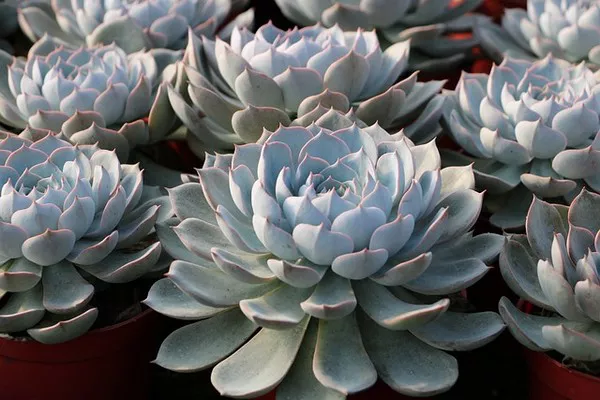Succulents have gained immense popularity in recent years for their unique beauty and easy-care nature. One of the most exciting phases in a succulent’s life is when it produces a flower stalk. This slender, often ornate structure emerges from the center of the plant, showcasing a mesmerizing array of colorful blooms. However, many succulent enthusiasts are unsure about what to do with these flower stalks once they appear. In this article, we will explore the various options for handling succulent flower stalks to maximize the beauty and life of your beloved plants.
Understanding the Nature of Succulent Flower Stalks
Before we delve into the options for dealing with succulent flower stalks, it’s essential to understand the nature of these structures. Succulents are known for their ability to store water in their leaves, stems, or roots. Flowering is an essential part of a succulent’s life cycle, but it can be both a rewarding and challenging experience for the plant and its caregiver.
Leave the Flower Stalk Intact
One of the simplest and most common approaches to dealing with a succulent flower stalk is to leave it untouched. Allowing the flower stalk to complete its natural life cycle can be an excellent way to enjoy the full beauty of the blooms while benefiting the plant.
Here are some key considerations for leaving the flower stalk intact:
a. Aesthetic Appeal: Succulent flowers are often stunning and come in various colors and shapes. Allowing the flower stalk to bloom can enhance the overall aesthetic appeal of your succulent garden.
b. Pollinators: Succulent flowers attract pollinators such as bees, butterflies, and hummingbirds. Allowing your succulent to bloom can help support local pollinator populations, contributing to the ecosystem.
c. Natural Life Cycle: Flowering is a part of a succulent’s natural life cycle. Allowing the flower stalk to complete its cycle allows the plant to fulfill its biological purpose.
d. Seed Production: Some succulent species produce seeds when they flower. If you’re interested in propagating your succulents, leaving the flower stalk intact can lead to the production of seeds for future plants.
Pruning the Flower Stalk
Pruning a succulent flower stalk is a common practice, especially when the primary goal is to maintain the succulent’s shape or conserve energy. Pruning involves removing the flower stalk before or after it blooms, and it can be done for various reasons:
a. Energy Conservation: Producing flowers requires a significant amount of energy from the succulent. By pruning the flower stalk, the plant can redirect its energy back into growth and overall health.
b. Aesthetic Control: Some succulent enthusiasts prefer a neat and compact appearance for their plants. Pruning the flower stalk can help maintain the desired shape of the succulent.
c. Prolonging Life: In some cases, especially with monocarpic succulents (plants that die after flowering), removing the flower stalk can extend the life of the main plant.
d. Preventing Seed Production: If you do not want your succulent to produce seeds, pruning the flower stalk before it matures can help prevent this.
Harvesting Seeds
If you’re interested in propagating succulents and experimenting with new varieties, harvesting seeds from the flower stalk can be an exciting option. However, this process requires patience, attention to detail, and some knowledge of succulent propagation techniques.
Here are the steps to harvest and propagate succulents from seeds:
a. Allow the flowers to bloom and mature on the succulent plant.
b. Once the blooms have withered and dried, carefully collect the seeds. Succulent seeds are typically tiny and can be found within the dried flower heads.
c. Sow the seeds in a well-draining succulent or cactus mix. Ensure the soil is moist but not waterlogged.
d. Place the seed tray or container in a bright, indirect light location.
e. Keep the soil consistently moist, and in a few weeks to months, you should see tiny succulent seedlings emerging.
f. Transplant the seedlings into individual pots once they have grown large enough to handle.
Propagating From Offsets or Leaves
In addition to propagating succulents from seeds, you can also use offsets (small plantlets that grow at the base of the parent plant) or leaves to create new plants. This is a popular method because it allows you to replicate the characteristics of the parent plant.
a. Offsets: Many succulent species produce offsets naturally. To propagate from offsets, carefully remove them from the parent plant and plant them in their own pots with well-draining soil.
b. Leaf Cuttings: Some succulents, like Echeveria and Sedum, can be propagated from individual leaves. Gently remove a healthy leaf from the parent plant, let it callus for a day or two, and then plant it in well-draining soil. Keep the soil lightly moist until roots and new growth appear.
Conclusion
Succulent flower stalks are a captivating aspect of these remarkable plants. Whether you choose to leave them intact, prune them for aesthetic or practical reasons, harvest seeds for propagation, or create new succulents from offsets or leaves, the key is to make informed decisions that align with your goals and preferences as a succulent enthusiast. By understanding the nature of succulent flower stalks and the various options available, you can make the most of these beautiful and fascinating plants in your garden or indoor collection.


